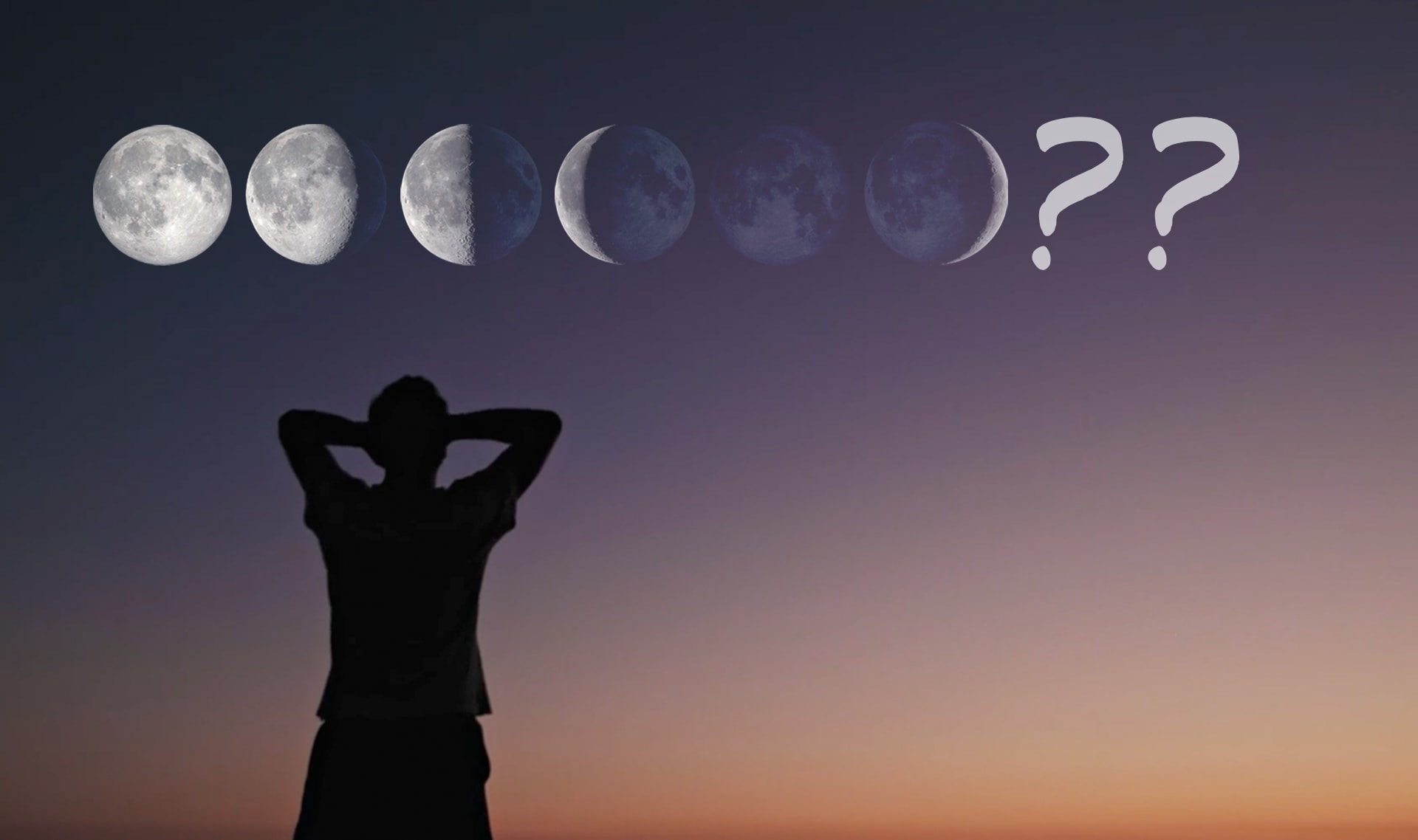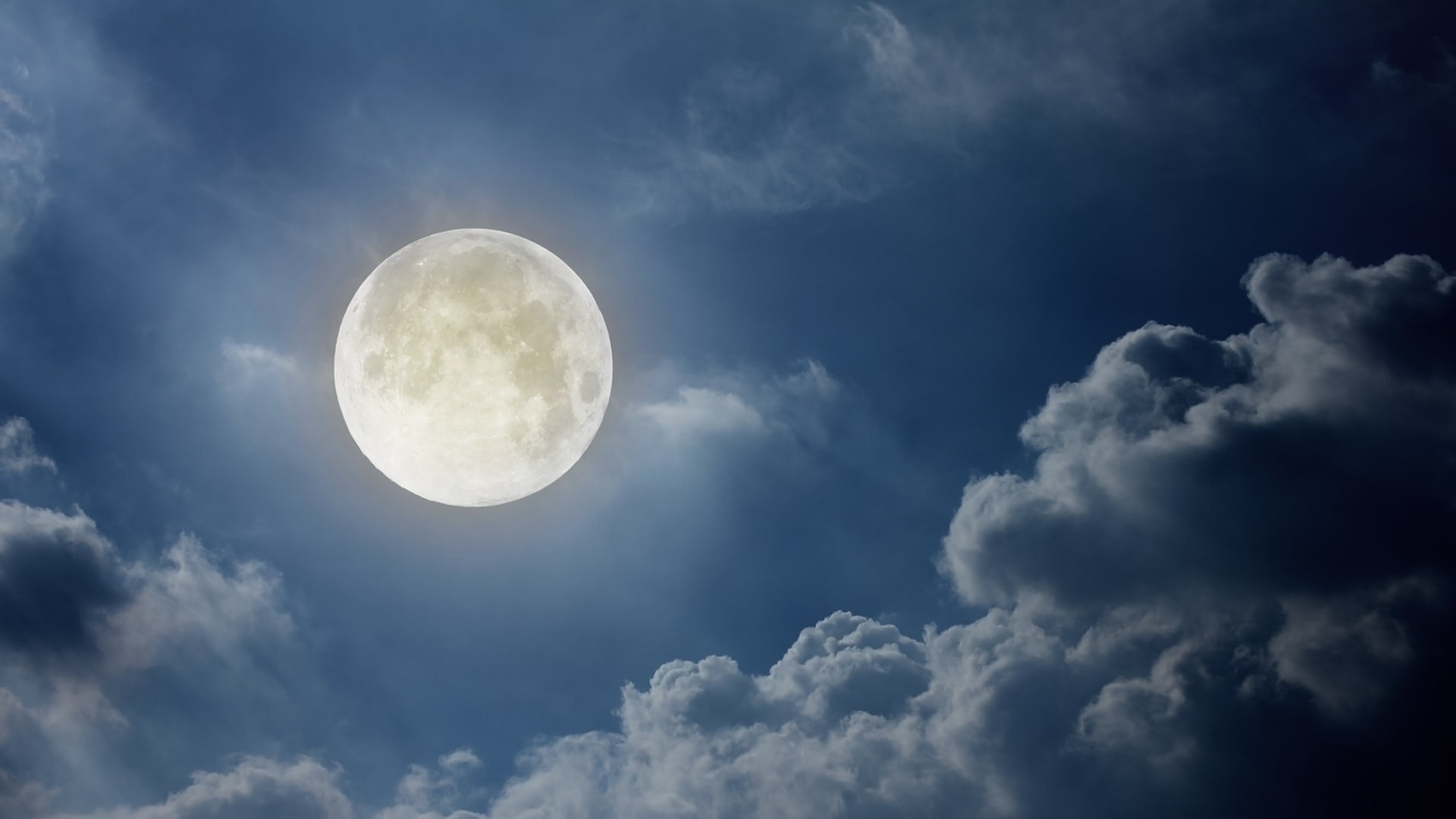
CONVERSEMOS (1 de 2):
¿Cómo podrías usar tus brazos para mostrarle a alguien la forma que tiene la luna llena?
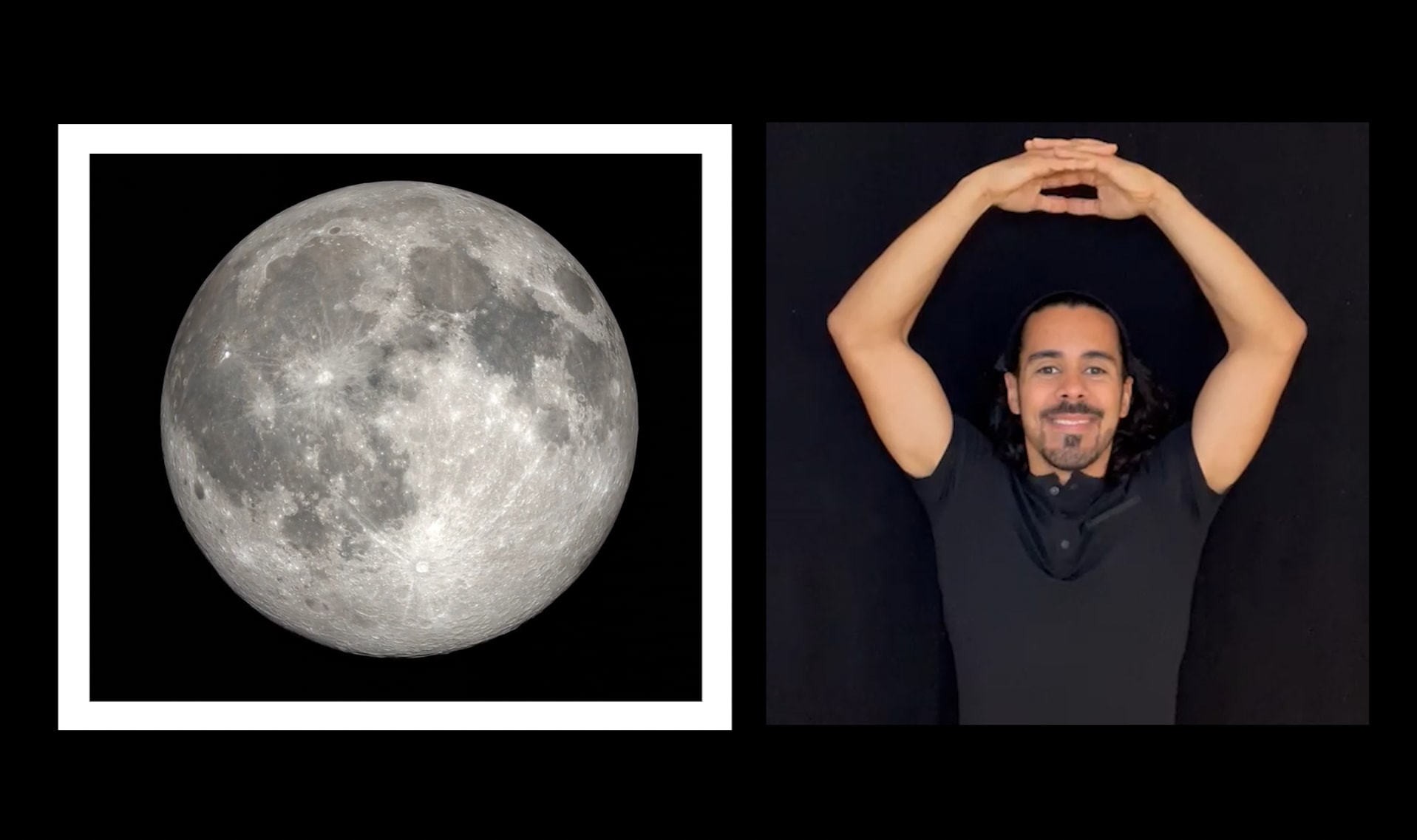
A veces, la Luna no parece un círculo.
CONVERSEMOS (2 de 2):
¿Qué otras formas puede tener la Luna?
Haz esas formas con tus brazos.

CONVERSEMOS:
¿Qué otros eventos se repiten una y otra vez siguiendo el mismo horario?

CONVERSEMOS:
Supongamos que observamos la Luna noche tras noche.
¿Crees que la forma de la Luna cambiará siguiendo un ciclo?
¿Por qué sí o por qué no?


01/24

02/24
compañero o compañera trabajarán juntos para hacer sus Libros de
la Luna.

03/24
Cuando termines, tendrás dos pedazos iguales.

04/24
mitad, así, de manera que las palabras queden por fuera. Alinea las
esquinas y las orillas antes de doblarlos.

05/24
una estrella. Voltéalos para que puedas ver el triángulo y la estrella.
Pon los pedazos de papel sobre tu mesa, así.

06/24
esquinas y remarca el pliegue con tu uña. Después de que los hayas
doblado, desdóblalos, de esta manera.

07/24
un triángulo, de esta manera.

08/24
del limpiapipas para doblarlo a la mitad. Aprieta los lados para que
quede plano.

09/24
limpiapipas sobre el doblez del libro. La otra patita del limpiapipas
estará en la parte de afuera. Tuerce las puntas del limpiapipas.

10/24
observar la Luna y dibujar las formas que tiene. Esto te ayudará a
acordarte cómo se ve la Luna y cuándo cambia.
Si necesitas hacer una pausa...
If you need a natural stopping point!
Mensaje para los maestros y las maestras: Teachers: If you are short on time, this is a good stopping point. You can come back and finish your Moon Book later. If you’re continuing right now, advance to the next slide.
Si vas a continuar la actividad, ve a la siguiente página.

11/24
blanco en la página #1 de tu libro. Con tu lápiz, remarca el contorno
de todo el círculo.

12/24
está iluminada, de esta forma. Luego, colorea la parte de la Luna que
está en la oscuridad con tu lápiz.

13/24
iluminada. Luego, colorea la parte de la Luna que está en la
oscuridad. Cuando termines, asegúrate que la Luna quede así.

14/24
iluminada. Luego, colorea la parte de la Luna que está en la
oscuridad. Cuando termines, asegúrate que la Luna quede así.

15/24
estando ahí, pero parece que desapareció. En la página 5, usa tu lápiz
para colorear toda la Luna, así.

16/24
ahora. Empieza en la página 1. Ahora mira la forma que tiene la Luna
en la página 2, 3, 4, y 5. Conversemos:

17/24
se hizo más chica. La Luna cambió de un círculo completo, a una media
luna, a una luna creciente, y ahora está en la oscuridad. Conversemos:

18/24
un momento. Compara esta forma de la Luna con la que dibujaste
en la página 4. Conversemos:

19/24
iluminada de la Luna, así. Luego, colorea la parte de la Luna que
está en la oscuridad con tu lápiz.

20/24
iluminada de la Luna, así. Luego, colorea la parte de la Luna que
está en la oscuridad con tu lápiz.

21/24
la Luna que está iluminada, así. Luego, colorea la parte de la Luna que
está en la oscuridad con tu lápiz.

22/24
semanas después de la primera foto. Así se veía la Luna.
Conversemos:

23/24
oscuridad. Empecemos en la página 5. Mira la forma de la Luna en
la página 6, 7, 8, y en la 1. Conversemos:

24/24
grande. La Luna estaba en la oscuridad y luego cambió a una luna
creciente, a una media luna, y ahora es una luna llena. Conversemos:

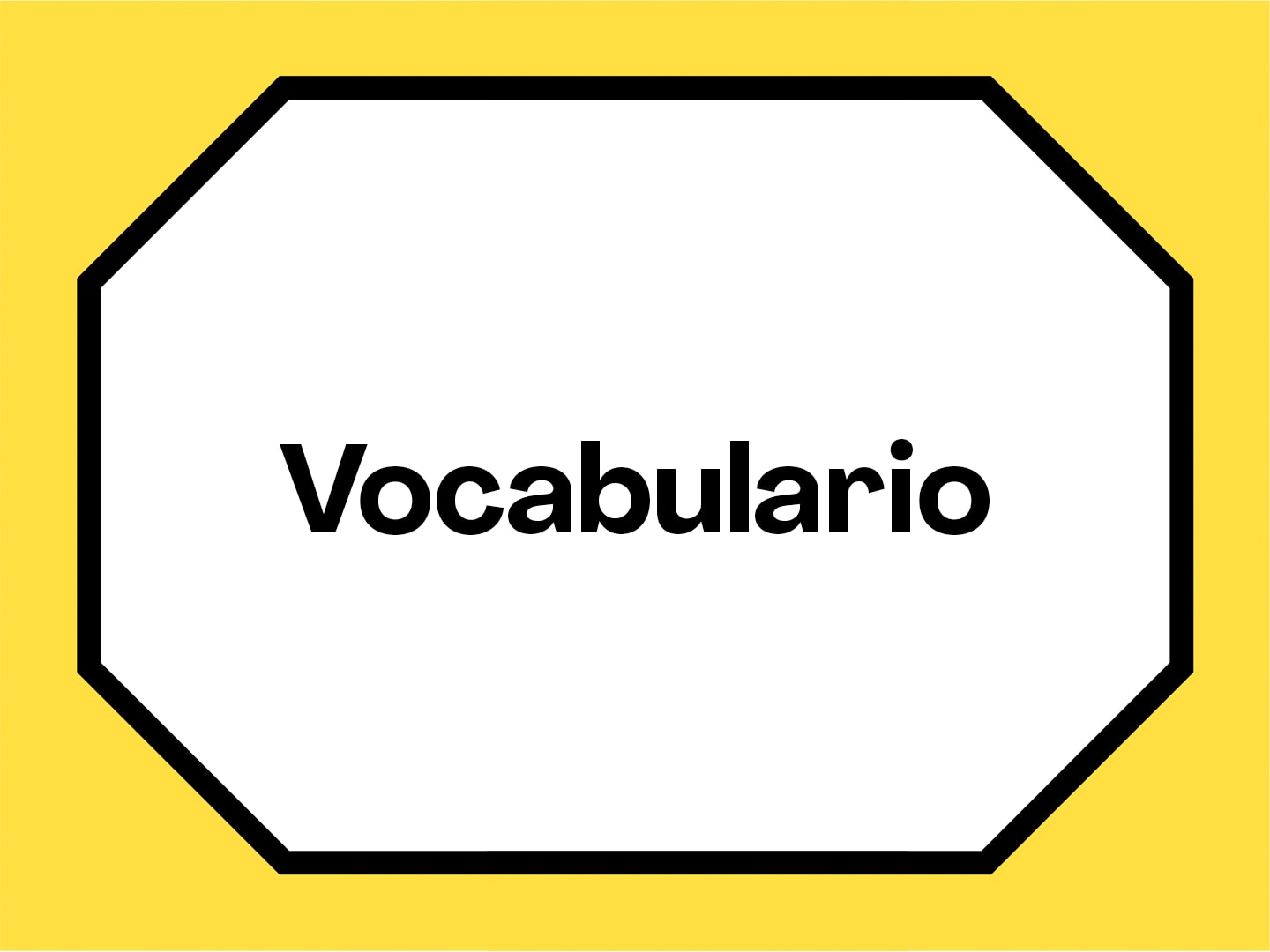
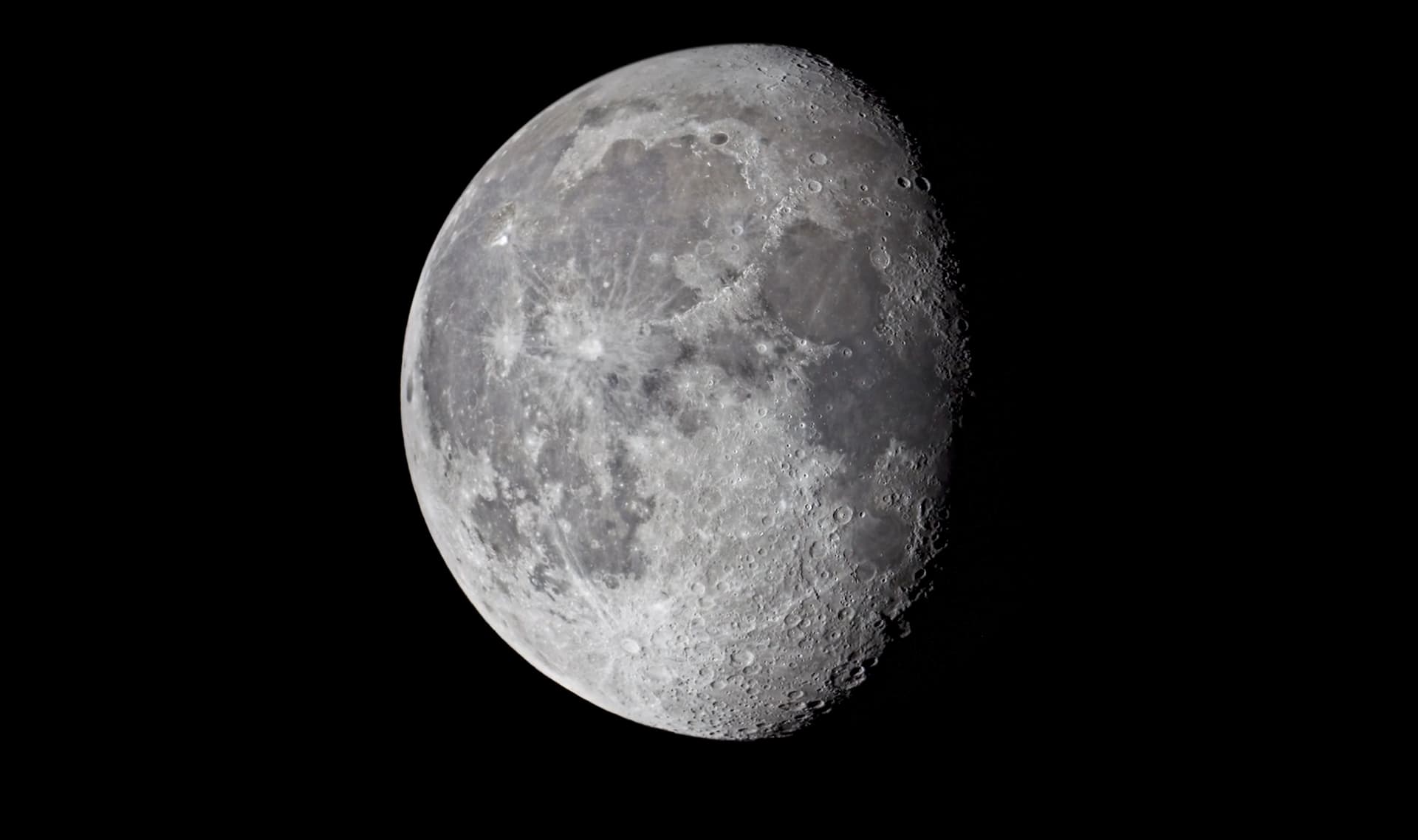
Luna
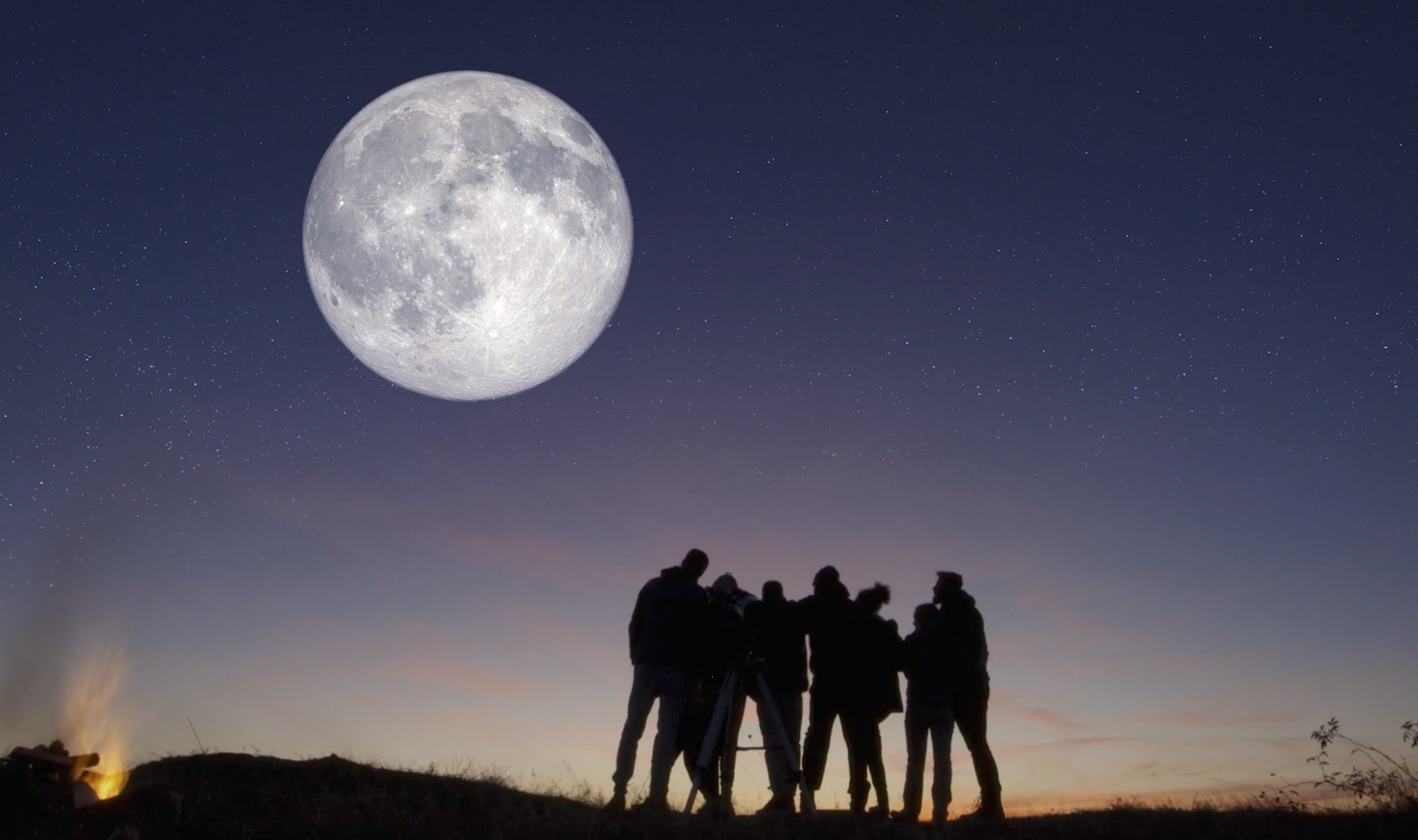
luna llena
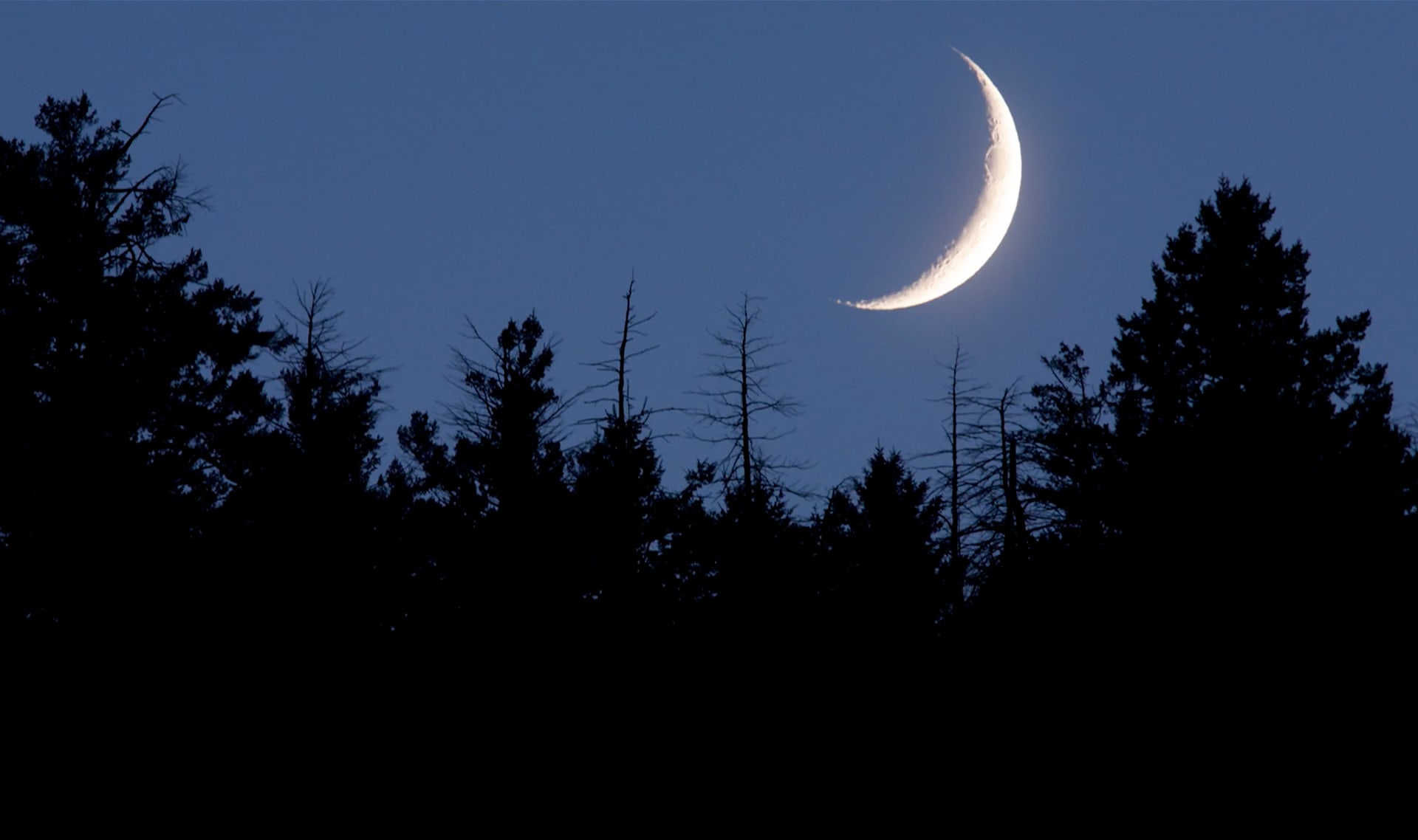
luna creciente

media luna
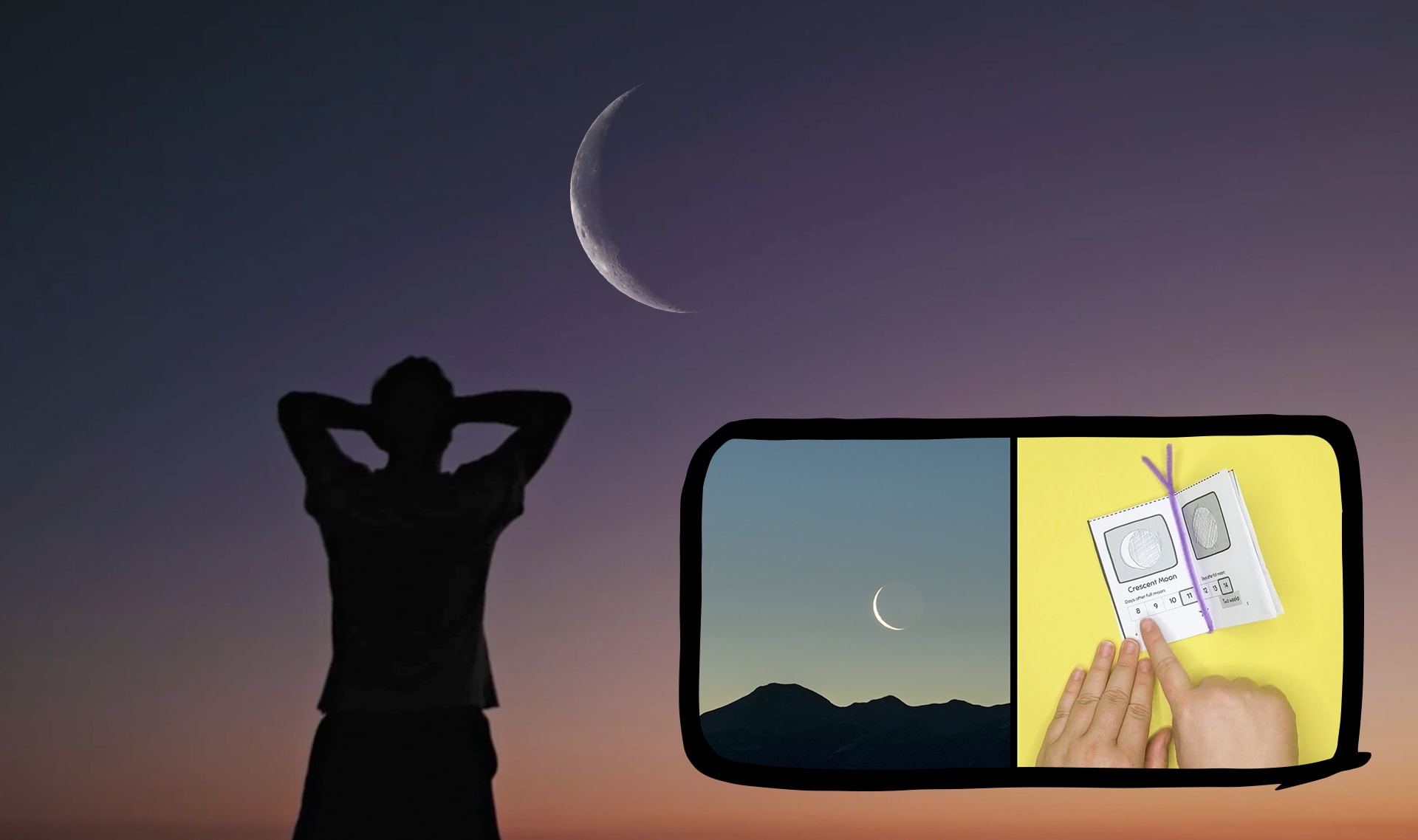
observar
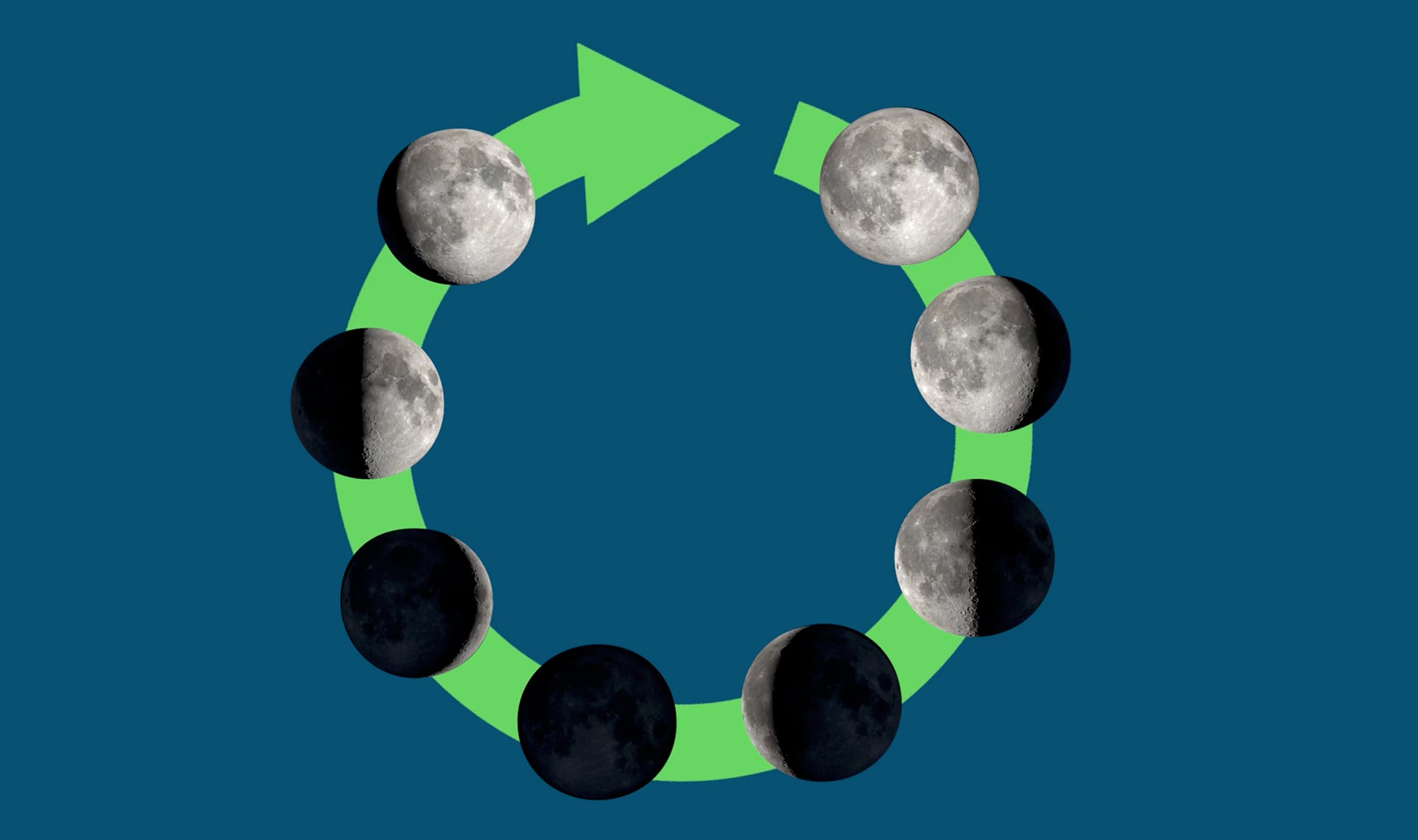
ciclo
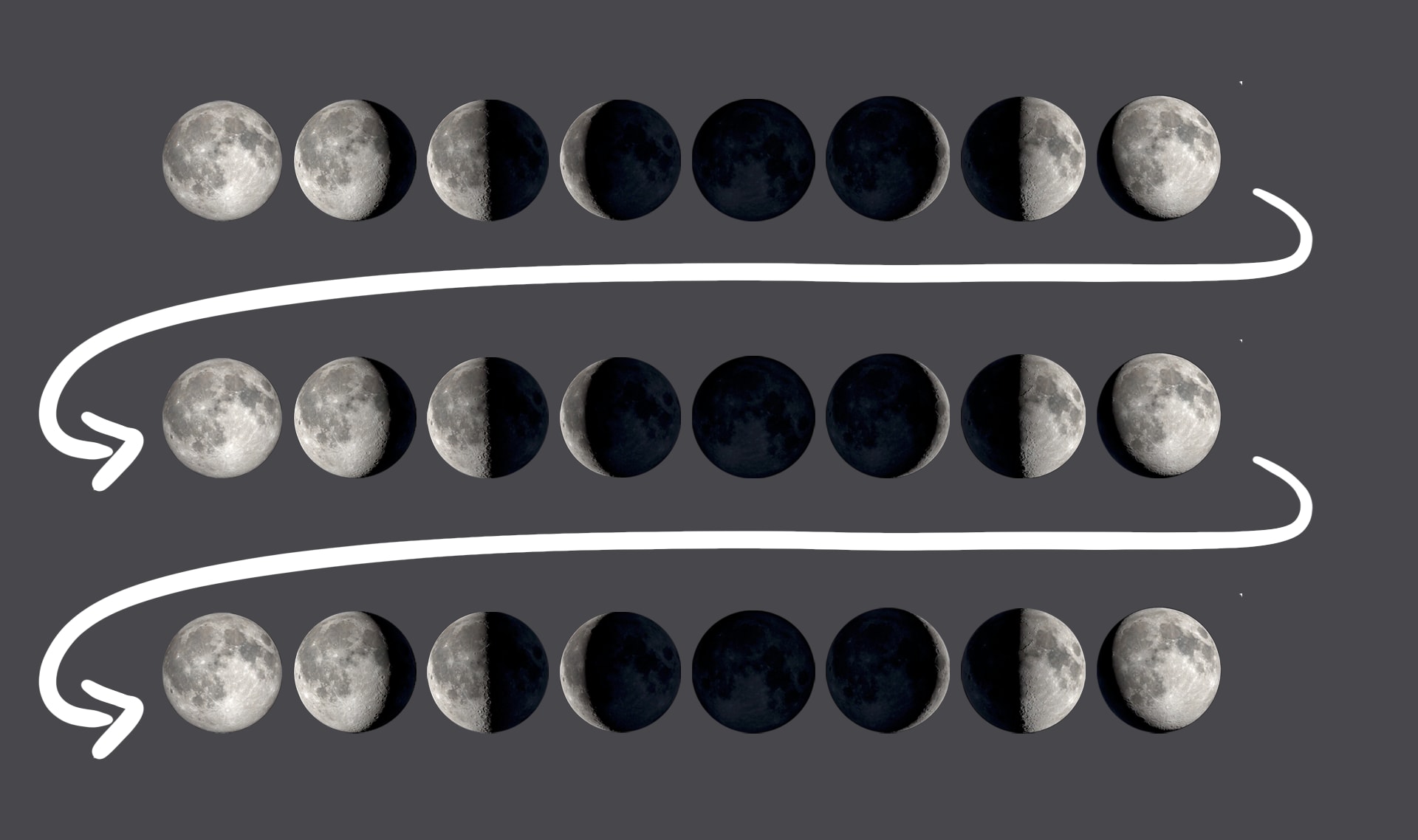
patrón
